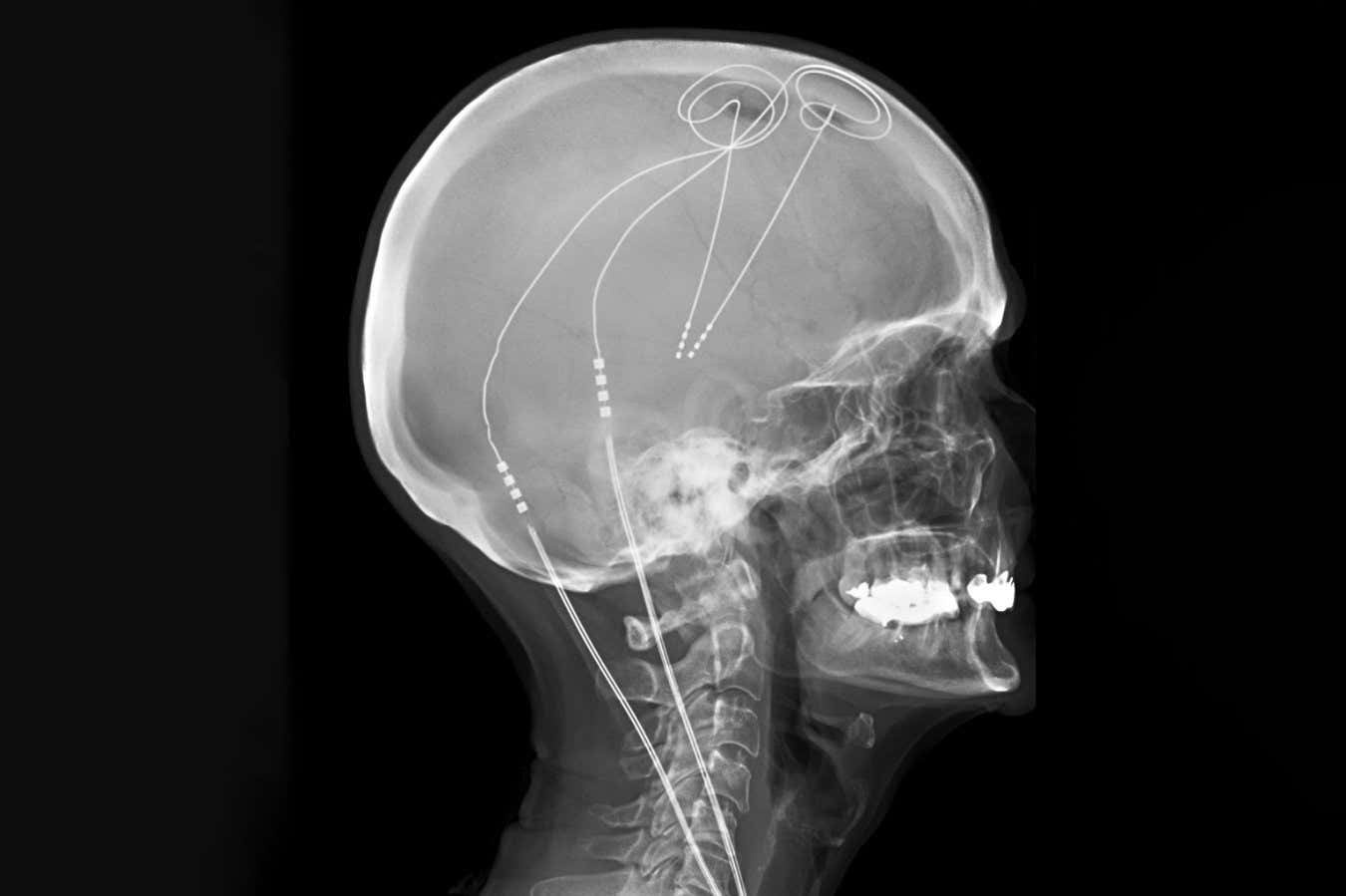An implant that monitors brain activity and provides personalised stimulation halved the discomfort of people living with chronic pain
By Helen Thomson
29 August 2025
Deep brain stimulation is already used to treat Parkinson’s disease
Living Art Enterprises/SCIENCE PHOTO LIBRARY
A brain implant that detects when someone is in pain and responds with deep brain stimulation has helped relieve people from previously untreatable chronic pain – with one participant even becoming able to hug his wife for the first time in years.
Chronic pain affects up to 20 per cent of people in the US, many of whom experience little relief from traditional pain therapies. This may be because it can result from fundamental changes to brain circuitry, which are challenging to target and remodel with standard therapies.
Read more
Is the human brain really the most complex object in the universe?
Deep brain stimulation (DBS), which involves stimulating the brain using tiny electrodes, has shown promise but has inconsistent results. Traditionally, the same brain areas are targeted in a one-size-fits-all approach, despite evidence suggesting that pain arises from different circuits in different people.
So Prasad Shirvalkar at the University of California, San Francisco, and his colleagues wondered whether a personalised system would be more effective. To find out, six people with previously untreatable chronic pain underwent intracranial electroencephalography, in which electrodes recorded activity from and stimulated 14 sites across their brain over 10 days.
For five of the participants, the researchers were able to identify which sites to target and which stimulation frequency provided the greatest relief. Although one of the five didn’t report significant pain relief, he did experience improved physical function and was able to hug his wife for the first time in years, which was considered meaningful enough to have him advance to the next stage of the trial.
